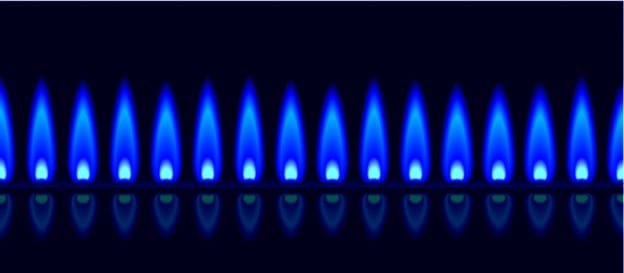In my last post, I discussed the different options you had if you wanted to trade on spot prices in natural gas—and how owning the physical asset, while not practical for the retail investor, is the better way to achieve that. In this post, I am evaluating the use of futures-linked ETFs, such as the largely popular United States Natural Gas Fund (NYSE:UNG), to trade spot prices.
The objective of futures-linked ETFs is to replicate changes in percentage terms of the natural gas spot prices via the trading of futures contracts and swaps. Changes in spot prices and futures prices are linked, so those ETFs use that relationship to give the investors the opportunity to trade on spot prices.
However, there are a few drawbacks in trading these ETFs. The first one is that they are trading futures and swaps, which only partially reflect spot prices. That relationship weakens the further you are along the forward curve.
The second drawback is the impact of the shape of the forward curve on return. This issue is quite apparent in UNG, where the fund sells the nearby contract before expiration in order to buy the more distant contract, a process called “roll over.” In a contango situation, the more distant contract is more expensive than the nearby contract, so when the fund rolls over its position, it looses money. On the other hand, in backwardation, the more distant contract is cheaper, and when the fund rolls over its position, it makes a profit. Hence, the shape of the curve adds quite a bit of noise to your trade. UNL, the other but less popular futures-linked ETF, tries to reduce the effect of the shape of the curve on return by holding the futures over a 12-month span.
One last drawback in the case of the UNG is the size of the fund. In Q4 2009, the fund became so large that the Commodity Futures Trading Commission (CFTC) became concerned about the impact of the UNG on natural gas prices and delayed approval for the issuance of new units. As a result, the ETF units began trading at a premium to the value of its underlying contract (NAV, or Net Asset Value) At the end of August 2009, that premium was closed to 17 percent.
The main conclusion here is that if you want to use futures-linked ETFs to trade spot prices, you have to remember these three things: 1. The ETF trades futures and not spot securities; 2. the shape of the forward curve will affect your return, and; 3. the ETF may trade at a premium to its NAV.
The net effect can be significant: from September 4, 2009 to January 26, 2011, natural gas Henry Hub spot prices increased 140 percent from a multi-year low of $1.8/mmbtu to $4.4/mmbtu. Over the same period, UNG decreased from $9.5/unit to $6.1/unit. Not so great for a fund that is supposed to track changes in spot prices.

























